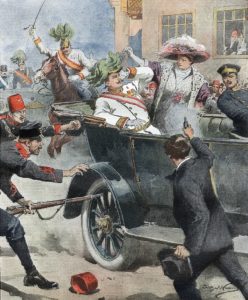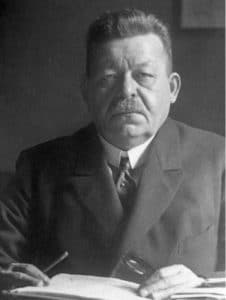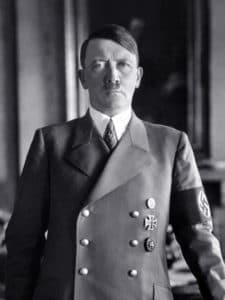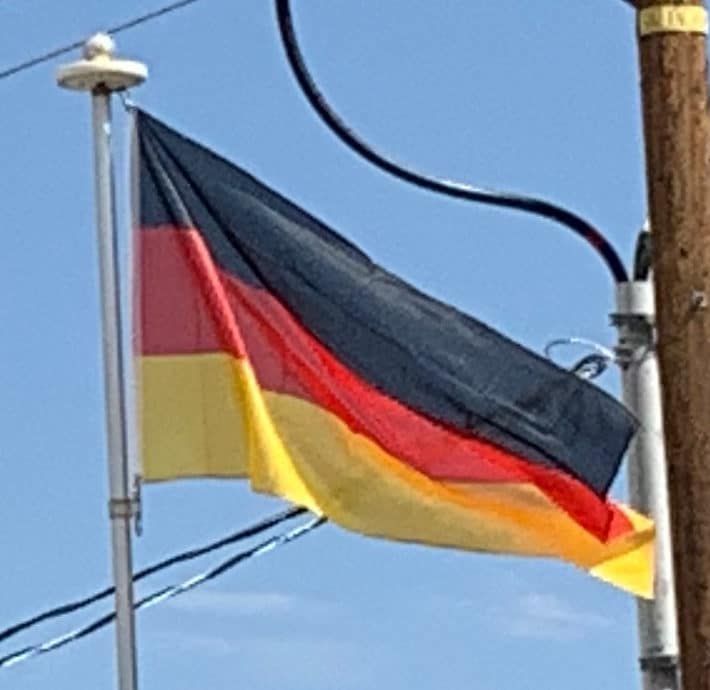
After four years of warfare, in which approximately two million German soldiers were killed, a general armistice ended the fighting. In the German Revolution (November 1918), Emperor Wilhelm II and the ruling princes abdicated their positions and Germany was declared a federal republic. Germany’s new leadership signed the Treaty of Versailles in 1919, accepting defeat by the Allies. Germans perceived the treaty as humiliating, which was seen by historians as influential in the rise of Adolf Hitler. Germany lost around 13% of its European territory and ceded all of its colonial possessions in Africa and the South Sea.
Weimar Republic and Nazi Germany:
On 11 August 1919, President Friedrich Ebert signed the democratic Weimar Constitution.

In the subsequent struggle for power, Communists seized power in Bavaria, but conservative elements elsewhere attempted to overthrow the Republic in the Kapp Putsch. Street fighting in the major industrial centers, the occupation of the Ruhr by Belgian and French troops, and a period of hyperinflation followed. A debt restructuring plan and the creation of a new currency in 1924 ushered in the Golden Twenties, an era of artistic innovation and liberal cultural life.
The worldwide Great Depression hit Germany in 1929. Chancellor Heinrich Brüning’s government pursued a policy of fiscal austerity and deflation which caused unemployment of nearly 30% by 1932. The Nazi Party led by Adolf Hitler won a special election in 1932 and Hindenburg appointed Hitler as Chancellor of Germany on 30 January 1933. After the Reichstag fire, a decree abrogated basic civil rights and the first Nazi concentration camp opened. The Enabling Act gave Hitler unrestricted legislative power, overriding the constitution; his government established a centralized totalitarian state, withdrew from the League of Nations, and dramatically increased the country’s rearmament. A government-sponsored program for economic renewal focused on public works, the most famous of which was the German autobahns.

In 1935, the regime withdrew from the Treaty of Versailles and introduced the Nuremberg Laws which targeted Jews and other minorities. Germany also reacquired control of the Saar in 1935, remilitarised the Rhineland in 1936, annexed Austria in 1938, annexed the Sudetenland in 1938 with the Munich Agreement, and in violation of the agreement occupied Czechoslovakia in March 1939. Kristallnacht saw the burning of synagogues, the destruction of Jewish businesses, and mass arrests of Jewish people.
In August 1939, Hitler’s government negotiated the Molotov–Ribbentrop pact that divided Eastern Europe into German and Soviet spheres of influence. On 1 September 1939, Germany invaded Poland, beginning World War II in Europe; Britain and France declared war on Germany on 3 September. In the spring of 1940, Germany conquered Denmark and Norway, the Netherlands, Belgium, Luxembourg, and France, forcing the French government to sign an armistice. The British repelled German air attacks in the Battle of Britain in the same year. In 1941, German troops invaded Yugoslavia, Greece and the Soviet Union. By 1942, Germany and other Axis powers controlled most of continental Europe and North Africa, but following the Soviet victory at the Battle of Stalingrad, the allies’ reconquest of North Africa and invasion of Italy in 1943, German forces suffered repeated military defeats. In 1944, the Soviets pushed into Eastern Europe; the Western allies landed in France and entered Germany despite a final German counteroffensive. Following Hitler’s suicide during the Battle of Berlin, Germany surrendered on 8 May 1945, ending World War II in Europe. After World War II, Nazi officials were tried for war crimes at the Nuremberg trials.
